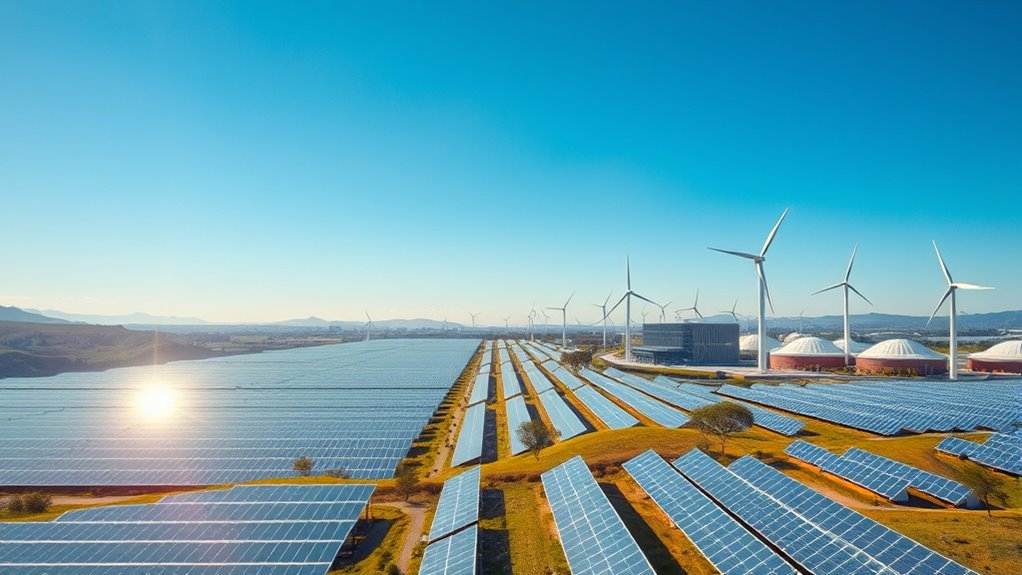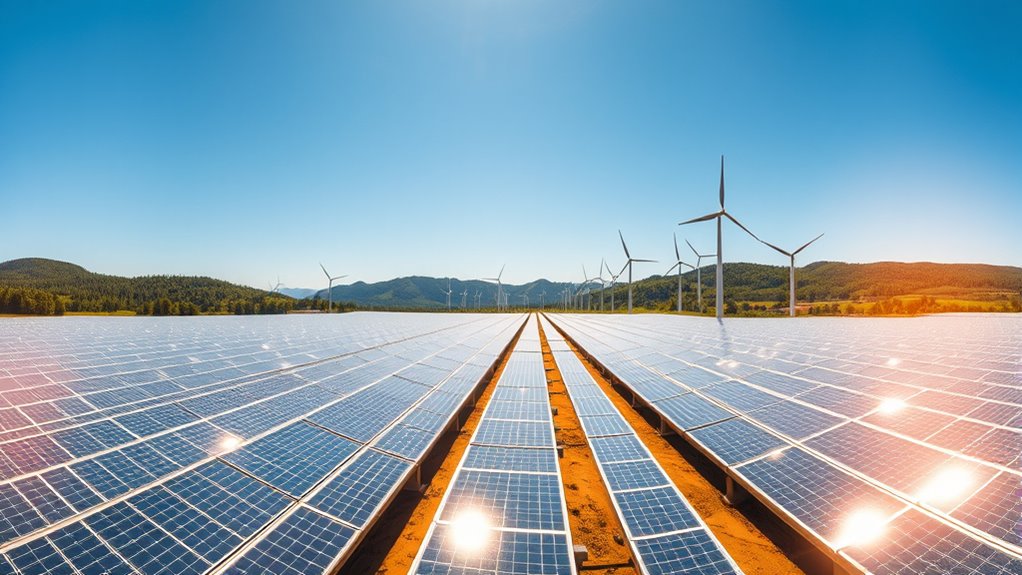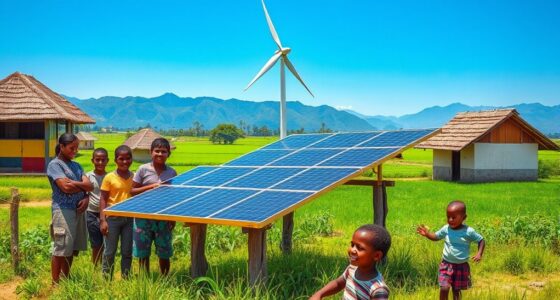By 2025, renewable energy is set to hit a major turning point due to rapid technological advances, falling costs, and strong policy support. These factors make renewables more accessible and affordable, driving global adoption and transforming the energy landscape. As innovations boost efficiency and storage solutions improve, the dependence on fossil fuels will decline considerably. Stick with us to discover how these changes will shape a sustainable future and what you need to know next.
Key Takeaways
- Technological advancements and cost reductions are making renewable energy more affordable and efficient globally.
- Policy support and market incentives are accelerating renewable adoption worldwide.
- Innovations in energy storage and grid integration are enabling large-scale renewable deployment.
- By 2025, renewable energy is expected to surpass fossil fuels in market share and infrastructure integration.
- The transition will generate economic benefits, including job creation and long-term cost savings.

The rapid expansion of solar, wind, and geothermal energy sources is expected to reach a pivotal point by 2025, potentially transforming the global energy landscape. This surge is driven by technological advancements, decreasing costs, and increased policy support, making renewable energy more accessible and economical than ever before. As innovations continue to improve efficiency and storage solutions, the integration of renewable sources into existing grids will become more seamless, reducing dependence on fossil fuels. Additionally, the economic benefits of renewable energy, including job creation and long-term cost savings for consumers, further bolster its growth trajectory.
Frequently Asked Questions
How Will Policy Changes Influence Renewables Growth Post-2025?
You’ll see policy shifts and subsidy reforms markedly shape renewables growth after 2025. These changes could either accelerate or slow progress, depending on how governments support clean energy. If subsidies are maintained or expanded, you’ll likely experience continued growth. Conversely, if policies tighten or subsidies are cut, growth may slow. Staying informed about these policy shifts helps you understand how future investments and projects will evolve in the renewable sector.
What Technological Innovations Are Expected to Accelerate Renewable Deployment?
You might worry that technological advances will slow down, but innovations in solar storage and wind technology are actually set to accelerate renewable deployment. Breakthroughs in solar storage will make solar power more reliable and cost-effective, while wind innovation—like larger turbines and better materials—boosts efficiency. These developments will make renewables more accessible, helping you see a cleaner, greener energy future faster than you might expect.
How Will Renewables Impact Global Energy Prices by 2025?
By 2025, renewables will lower global energy prices through increased energy storage and market competition. You’ll see more efficient storage solutions, which balance supply and demand, reducing costs. As market competition intensifies, prices will drop further, making renewable energy more affordable. This shift benefits consumers and economies alike, fostering a cleaner, more sustainable energy landscape where renewables become a primary energy source, driving down costs worldwide.
What Challenges Could Hinder Renewable Expansion Despite Growth Projections?
You might face challenges in expanding renewables despite positive growth forecasts. Grid stability concerns could slow down integration, especially as renewable sources like wind and solar fluctuate. Supply chain issues, such as shortages of critical components, could also delay project deployment. Overcoming these hurdles requires investments in infrastructure and resilient supply networks, ensuring renewables can grow sustainably without compromising energy reliability.
How Will Renewables Integration Affect Existing Power Grids?
Did you know that by 2030, renewables could make up nearly 60% of power generation? As you integrate more renewables, you’ll need to focus on grid stability, since variable sources like wind and solar can cause fluctuations. Storage solutions become essential, helping balance supply and demand and ensuring reliable energy flow. This shift requires upgrades to existing grids to support smarter, more flexible infrastructure.
Conclusion
Just like a tidal wave building behind a barrier, the surge in renewables is unstoppable by 2025. You’ve seen how investments are accelerating and technology is advancing rapidly. This turning point isn’t just a number—it’s a shift in the tide of our future. When you realize that every solar panel and wind turbine is a brick in the wall of sustainable progress, it becomes clear: the momentum is unstoppable, and a cleaner, greener world is within reach.










